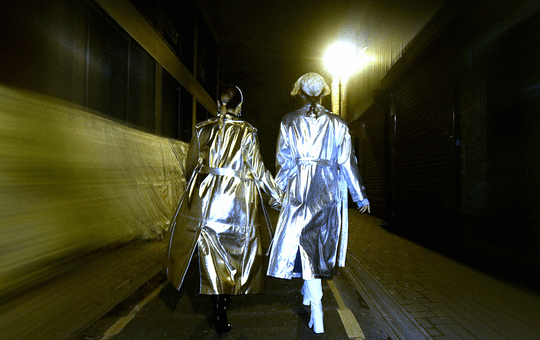A Love Letter to Trip Hop
It was the mid-90s and school was out for the summer. The suburban American sprawl that my family called home had just been graced by the opening of a shining beacon of teenage promise, a strip mall storefront with neon signage that screamed, ‘Buy, Sell & Trade New & Used CDs’. My mother had a large collection of CDs, traveled often for work and was rarely home. My father spent his days watching television and not giving a damn about much else. In a flash of selfish brilliance my younger brother and I implemented what would become the most fruitful of our many summer schemes. A few at a time, we would trade my mother’s CDs for new music of our own choosing.
On a rainy afternoon I entered the shop nervously with my first three swipes from my mother’s bookcase: Dire Straits, ZZ Top and Alice in Chains. The plan was flawless and minutes later I had enough store credit to do some shopping. I can’t pinpoint why I gravitated towards the rusted, red door and distressed typography gracing the cover art of Tricky’s ‘Maxinquaye’. I was a fan of punk and ska, and took great pride in playing the role of teenage riot grrrl. I had never heard of Tricky, nor did I have any insight into his music as I headed home to fire up my newly purchased mystery disc.
I still remember that exact moment I popped ‘Maxinquaye’ into my stereo, mind blown at the immersive and innovative sound. My ears were met with a deep bassline that moved at an impossibly slow bpm. My head couldn’t help but nod in time as my eyes drifted closed to a soundtrack of cascading, otherworldly manipulated noises buried in jazz loops and hip hop beats. I was an avid fan of slam poetry and found many similarities in the dark, powerfully spoken lyrics. Sneaking out of bed late at night and lying on the carpeted floor of the family room in the dark listening to ‘Maxinquaye’ became a nightly date. At the time I still had no name for this new genre of music, but I knew I had to find more. I was in love.
That summer I returned weekly to the shop in the strip mall, carefully selecting whatever was new from the rack where I had first found ‘Maxinquaye’. Portishead’s ‘Dummy’, DJ Shadow’s ‘Entroducing’, Massive Attack’s ‘Blue Lines’ and Faithless’ ‘Reverence’ became mainstays on my stereo, providing a means of escapism. I began to buy import copies of Mixmag and The Face, digging deeper into the genre and its history and offshoots. I discovered The Wild Bunch, Bowery Electric, DJ Cam, Unkle and cultivated the beginnings of a decade long obsession with Bjork.
In the years following, trip hop took on new meaning. It was not just a favorite genre but a guide for musical exploration in unfamiliar territory. I began to listen to acid jazz, breakbeat, reggae and dub. I embraced the changing of the guard as artists like Morcheeba, the Gorillaz and the Sneaker Pimps re-imagined the style of their forefathers. I lived thousands of miles from trip hop’s Bristolian epicentre and was years too young for club admittance, but cut off from the places and things I so desperately wanted to be a part of, I found myself.
It’s been nearly 15 years since I selected ‘Maxinquaye’ at random from that shop rack. I’ve changed a lot since then, but one habit remains constant. I go record shopping in search of the unfamiliar, deliberately bypassing the stacks of glossy new releases and recognisable names in favour of blind discovery. Trip hop broadened my taste and solidified how I consume music. I didn’t grow up on trip hop, but finding trip hop made me grow up.
Veronica Murtagh is the editor of Cream Team, an excellent Chicago music site.













